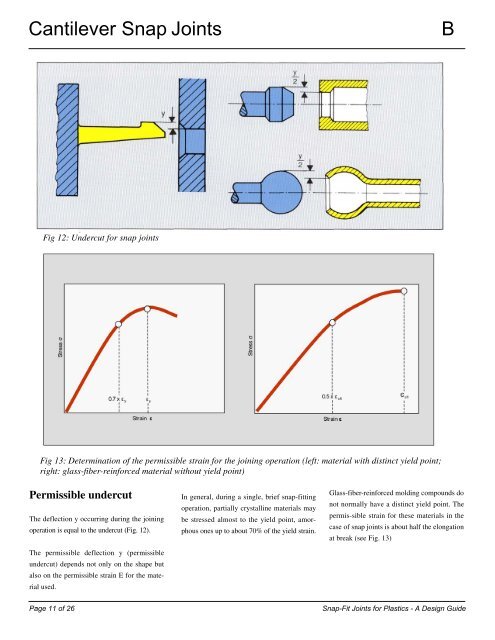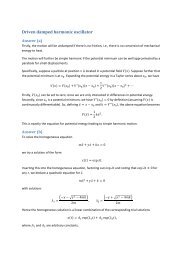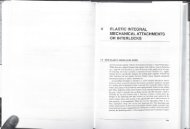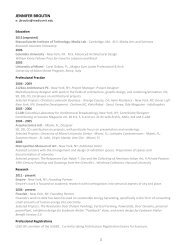Snap-Fit Joints for Plastics - A Design Guide - MIT
Snap-Fit Joints for Plastics - A Design Guide - MIT
Snap-Fit Joints for Plastics - A Design Guide - MIT
You also want an ePaper? Increase the reach of your titles
YUMPU automatically turns print PDFs into web optimized ePapers that Google loves.
Cantilever <strong>Snap</strong> <strong>Joints</strong> B<br />
Permissible undercut<br />
The deflection y occurring during the joining<br />
operation is equal to the undercut (Fig. 12).<br />
The permissible deflection y (permissible<br />
undercut) depends not only on the shape but<br />
also on the permissible strain E <strong>for</strong> the material<br />
used.<br />
12<br />
Fig 12: Undercut <strong>for</strong> snap joints<br />
Fig 13: Determination of the permissible strain <strong>for</strong> the joining operation (left: material with distinct yield point;<br />
right: glass-fiber-rein<strong>for</strong>ced material without yield point)<br />
In general, during a single, brief snap-fitting<br />
operation, partially crystalline materials may<br />
be stressed almost to the yield point, amorphous<br />
ones up to about 70% of the yield strain.<br />
Glass-fiber-rein<strong>for</strong>ced molding compounds do<br />
not normally have a distinct yield point. The<br />
permis-sible strain <strong>for</strong> these materials in the<br />
case of snap joints is about half the elongation<br />
at break (see Fig. 13)<br />
Page 11 of 26 <strong>Snap</strong>-<strong>Fit</strong> <strong>Joints</strong> <strong>for</strong> <strong>Plastics</strong> - A <strong>Design</strong> <strong>Guide</strong>





